The Beer Trail
Thursday, January 18, 2024
- Patagonia
It still gets pretty warm here in the Lake District during the day. So that I can at least escape the heat a little, my day starts at 5:00 a.m.
That's why I said goodbye to Flo, Manuela, Jan and Gion the evening before. I drove out of San Martin de los Andes with the first rays of sunshine.
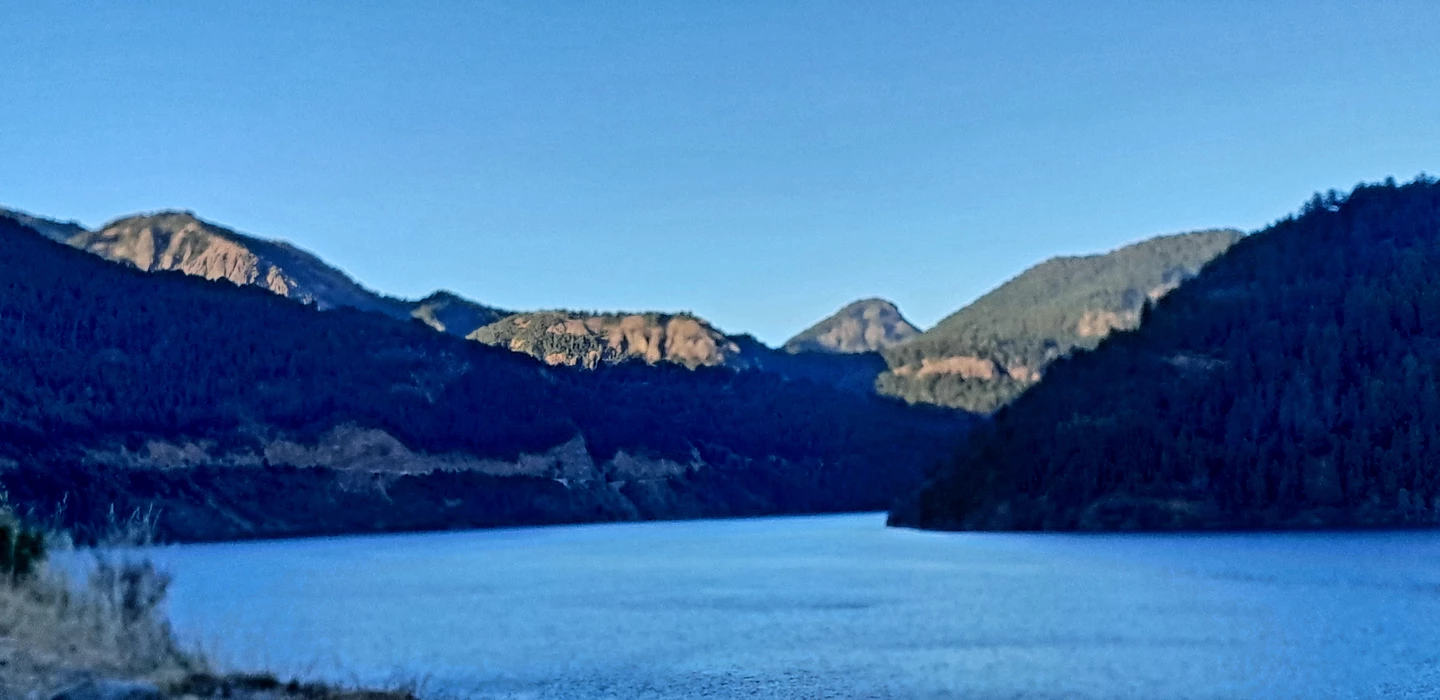
Right from the start things went uphill. But the view of Lake Lácar was great. The Ruta de los Siete Lagos is the popular name for the scenic section of Ruta 40 between San Martín de los Andes and Villa La Angostura.

Since it is high season, there is a lot of traffic here. At least there is finally a small section of asphalt on the side of the road. This means that as a cyclist you are somewhat protected.
In addition to the lakes, the surrounding mountains are another highlight. Some peaks, like Cerro del Buque, still have white peaks.

I have never seen as many cyclists as here on the entire trip. Many backpackers rent a bike and cycle the route in 1 to 2 days. I started talking to some of them at the many viewing points.

At Lake Correntoso I decided to cycle a little further and found a place for wild camping a few kilometers before Villa La Angostura, right next to the road.
The Parque Nacional Nahuel Huapi is the oldest national park in Argentina. It was founded in 1922 and, at 7,000 km², is one of the largest parks in the region.
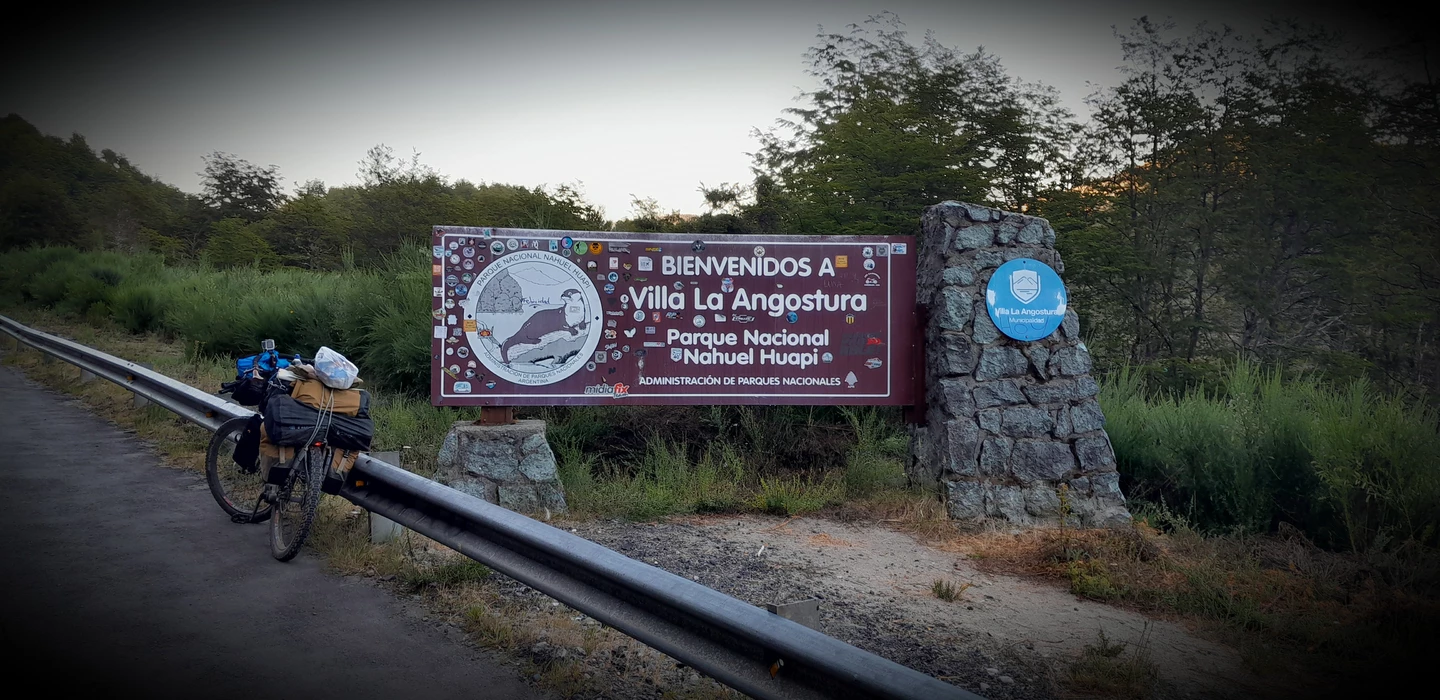
Most shops are usually closed before 10:00 a.m. Fortunately, there are YPF gas stations in every large town. Some of them are open 24 hours, offer good coffee, WiFi and the option to charge electronic devices.

I started loading my packraft on the beach at Villa La Angostura. To do this, I first had to take all the bags off my bike.

Just when I was almost finished, Pablo spoke to me. He works as a sea kayak tour guide for Patagonia Infinita and recommended that I paddle from the beach 500 meters away on the opposite side along the coast of Lake Nahuel Huapi.

So I loaded Siemis again and played the same game again on the beach, where the ferry to Bariloche leaves.
First the port authorities and then the maritime police came by. They checked my equipment and showed me on the map exactly where I could paddle along the coast.

The first few paddlstrokes felt a little strange. I hadn't secured the bike far enough forward in the boat and therefore didn't have as much room to paddle.
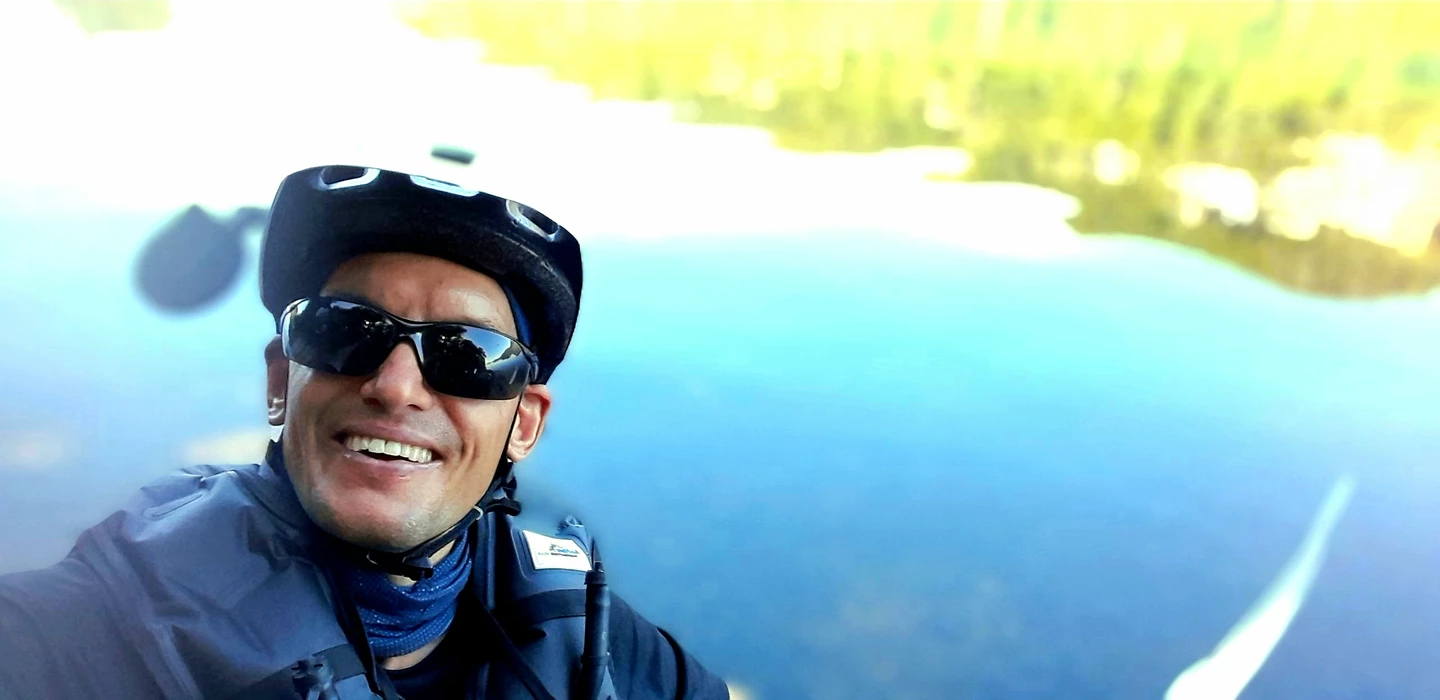
I took a short break in the shade on a beach and moved the bike a little further forward on the boat. This shifted the center of gravity, but gave me more room for the paddle strokes.

There was always a light wind blowing almost constantly, which meant I had to paddle non-stop. Even when I took short breaks, for example to take a photo, I immediately drifted off.
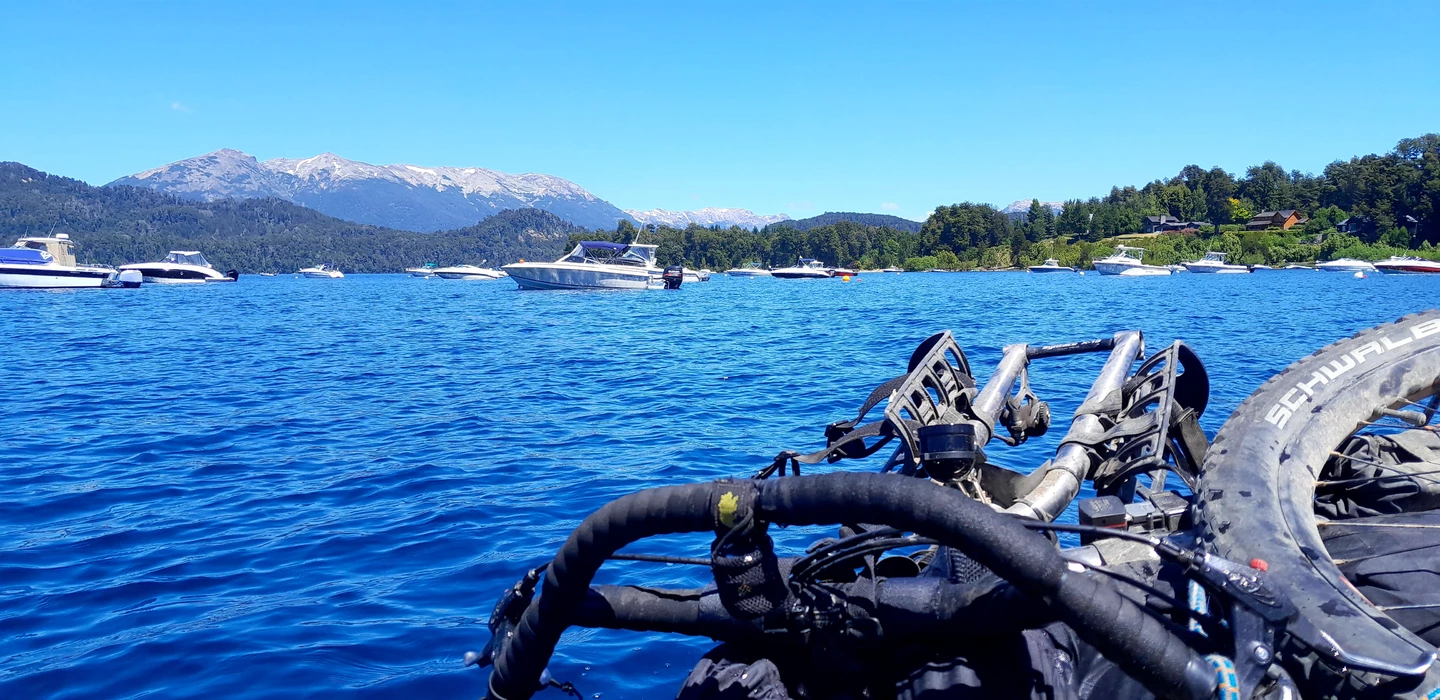
However, the feeling of being on the water is almost indescribably beautiful.
Gliding over the water, away from traffic, noise and dust, with a fantastic mountain scenery in the background, is a brilliant experience.

There are some pretty posh houses along the lake and also quitte a lot of motorboats on the water. These create sometimes lots of waves.
My shoulders started to burn quite a bit after a few hours. I'm definitely not used to paddling for so long anymore.
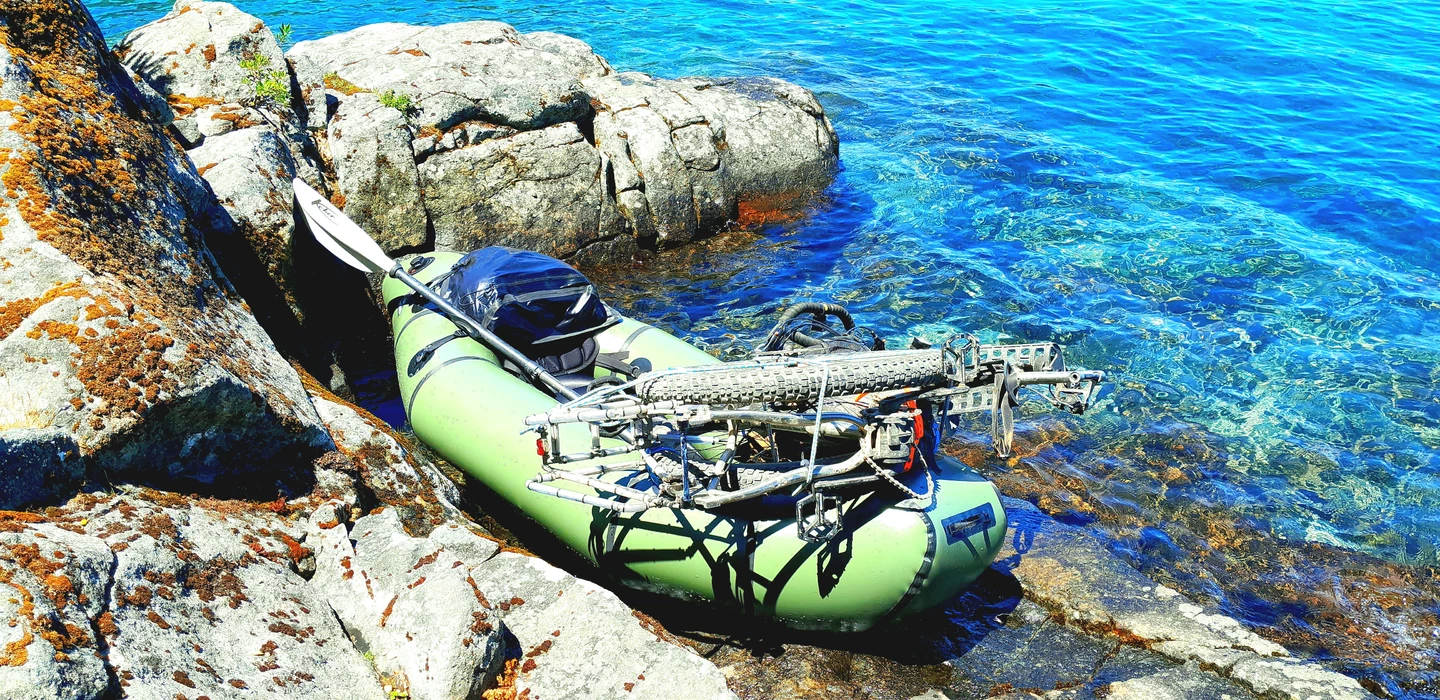
In the afternoon I finally reached the beach where the maritime police had recommended that I disembark. Once again it took me almost 2 hours until I had put the bike together and everything was packed again.
I did some quick shopping in a Minimercado and then cycled a few kilometers further on Ruta 40 until I found my campsite in a forest.

Two gauchos who came by with their mules allowed me to spend the night on the site.
Completely exhausted but overjoyed, I fell into my sleeping bag at sunset. What a great day on the water.
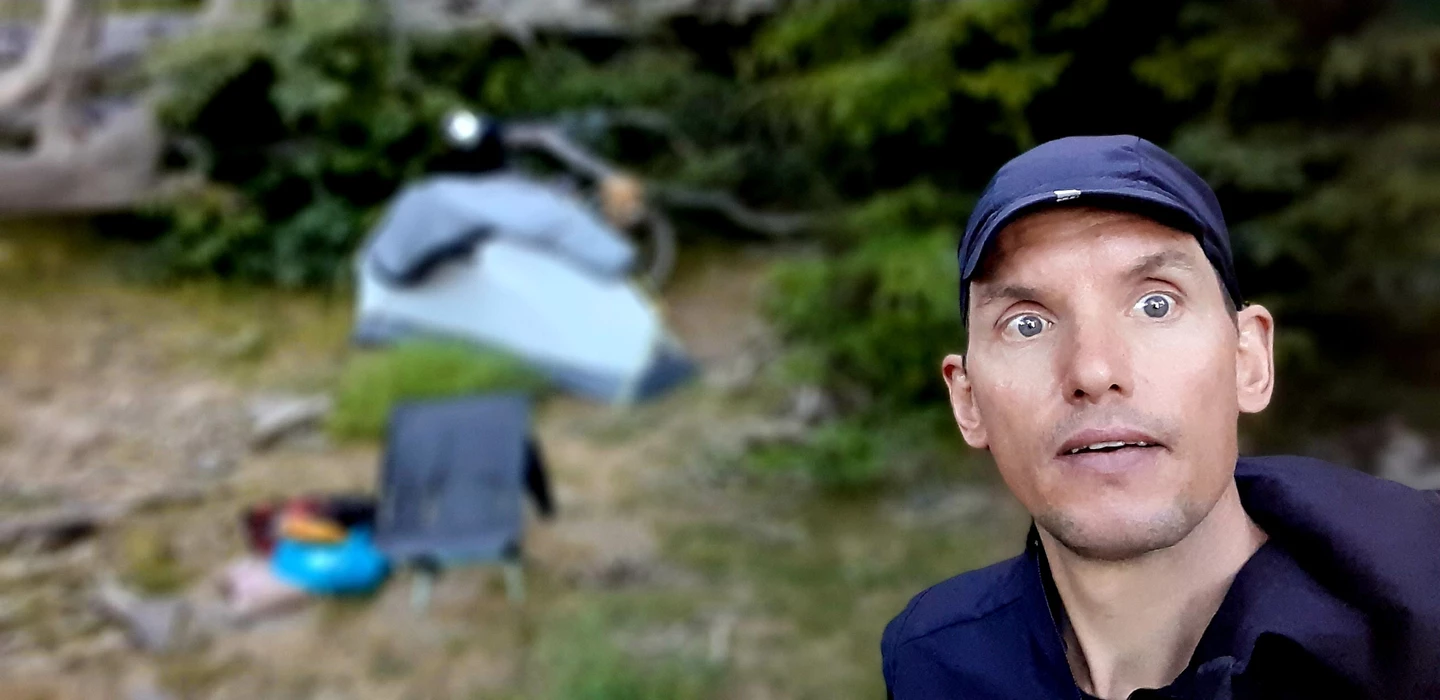
The next day started with fairly cool temperatures. There is already a lot of traffic here on Ruta 40 early in the morning.
In addition to tourists, some trucks and larger buses come through here.

There is no more space on the side of the street. My middle finger was used regularly again.
It's impressive how quickly the landscape changes here. Once you are a few kilometers away from the lakes and rivers there are practically no trees and bushes left.
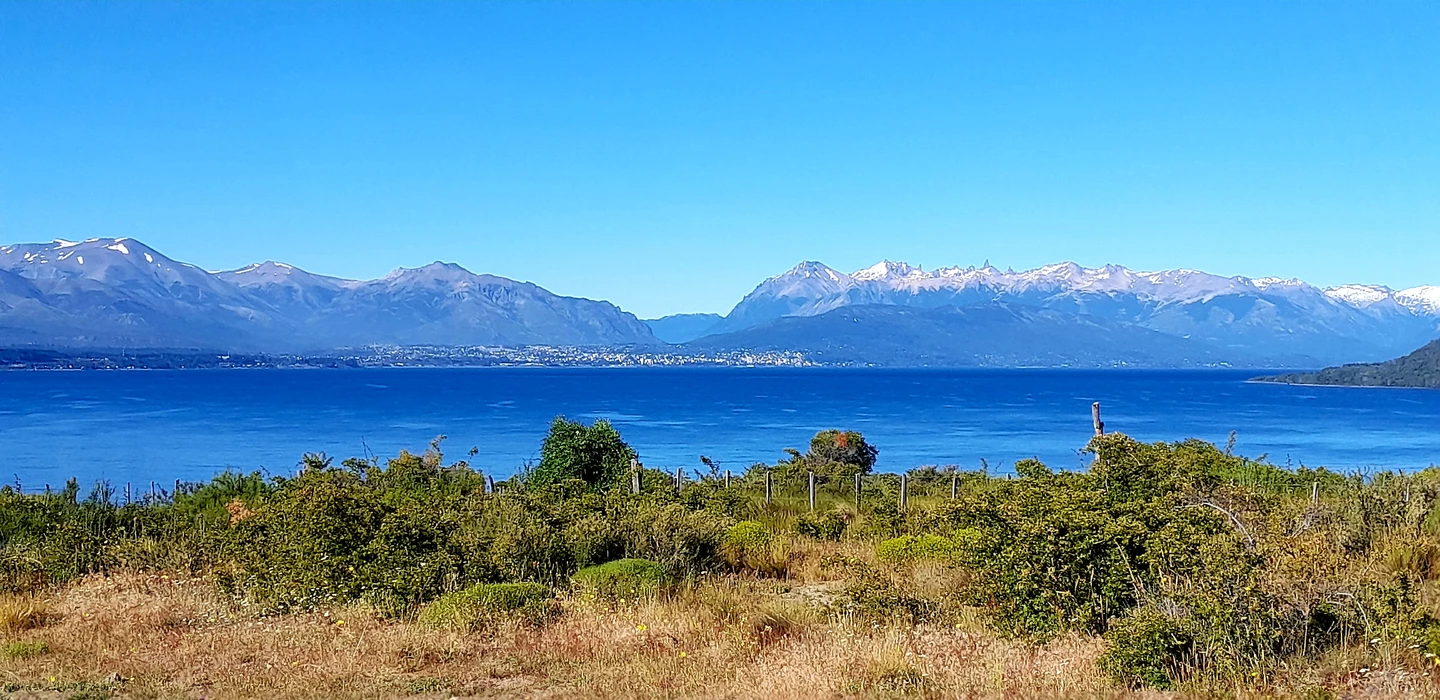
I slowly arrived in San Carlos de Bariloche around midday. The traffic got so bad here that I could only cycle on the gravel strip.

But I had a great surprise when I had internet access again and checked my messages.
Two former work colleagues are currently here in Bariloche. Carla had read my blog and then contacted me.

She and Danny arrived in Santiago de Chile almost at the same time as me and bought a small bus there.
With this the two are climbing and mountaineering in the Andes. They have almost 100 kilograms of equipment with them!
Carla gave me one of her credit cards. I had to have mine blocked because an attempt was made to access the card in Junin de los Andes.

The two left the city that same day and now want to climb a few peaks in El Chatlén. Safe travels and thank you for your help!
I treated myself to a day of rest at the campsite in Bariloche. Towards the evening I was greeted by what Patagonia is notorious for among touring cyclists: the wind.

After breakfast at the YPF gas station, I headed towards the airport again early in the morning. Shortly before that, a gravel road turns off and leads around the runway.
This is Ruta Provincal 80, which leads onto the Beer Trail. It actually starts in San Martin de los Andes, but because of my packraft trip I chosed a different way.

There was a bridge at the first river. She would be the last for a long time. First it went straight up the mountain.
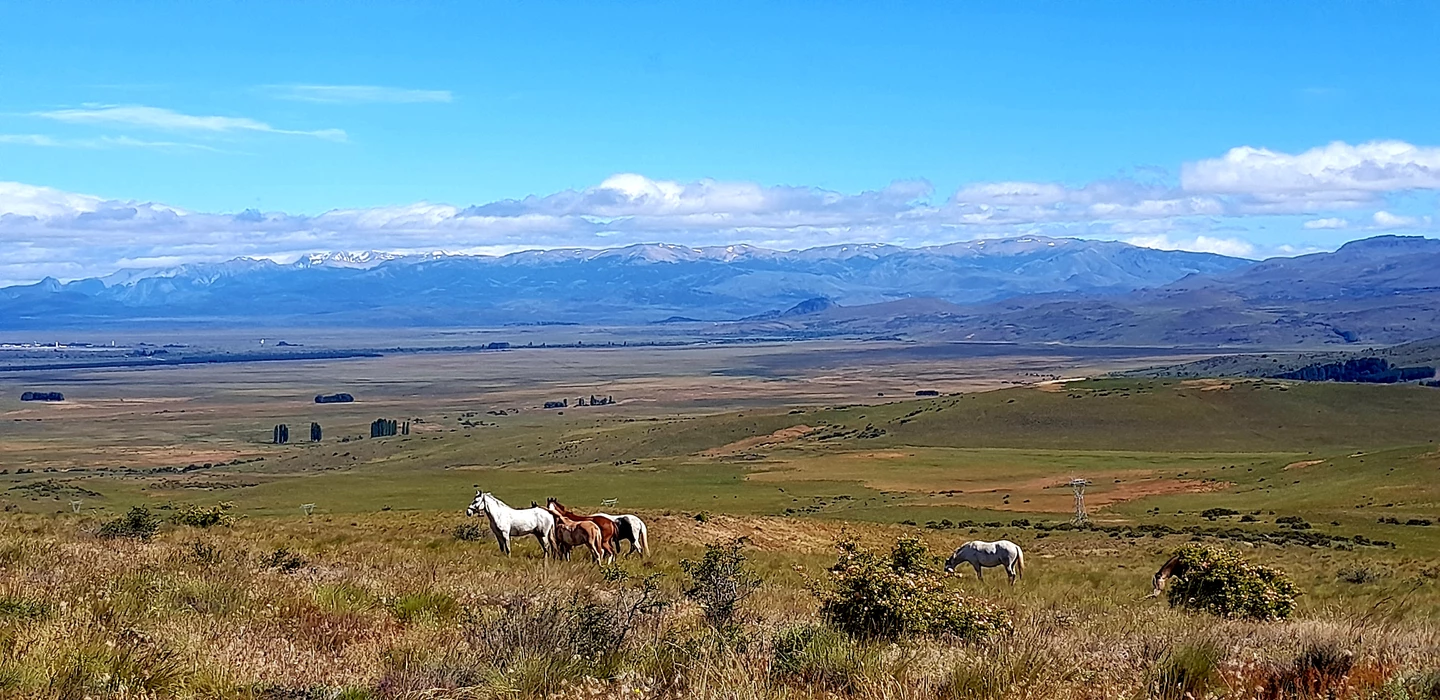
The view of the airport and the surrounding countryside is very beautiful here. Suddenly having virtually no traffic is a completely unusual feeling.

The first river crossing came at Arroyo Pichileufu. A few fishermen were looking for shelter from the wind when I pushed my bike through the river.

I found a little shelter from the wind behind a crest right on the path. No shadows, but you just have to set priorities.

At the foot of Cerro David, the Beer Trail branches off from the RP80. To navigate, I use the route description (https://bikepacking.com/routes/patagonia-beer-trail-argentina/) and compare it with the route recommendation on Maps.Me, which is very helpful for not getting off the path.

At around 4:30 p.m. I reached the Arroyo Chenqueniyén and had to decide whether I should spend the night here or tackle the transition to the Arroyo El Montoso.
Since there was no wind protection here at all, it was easy for me to decide to continue. However, the mobile road ends at this point and the whole thing turns into a hike and bike adventure.
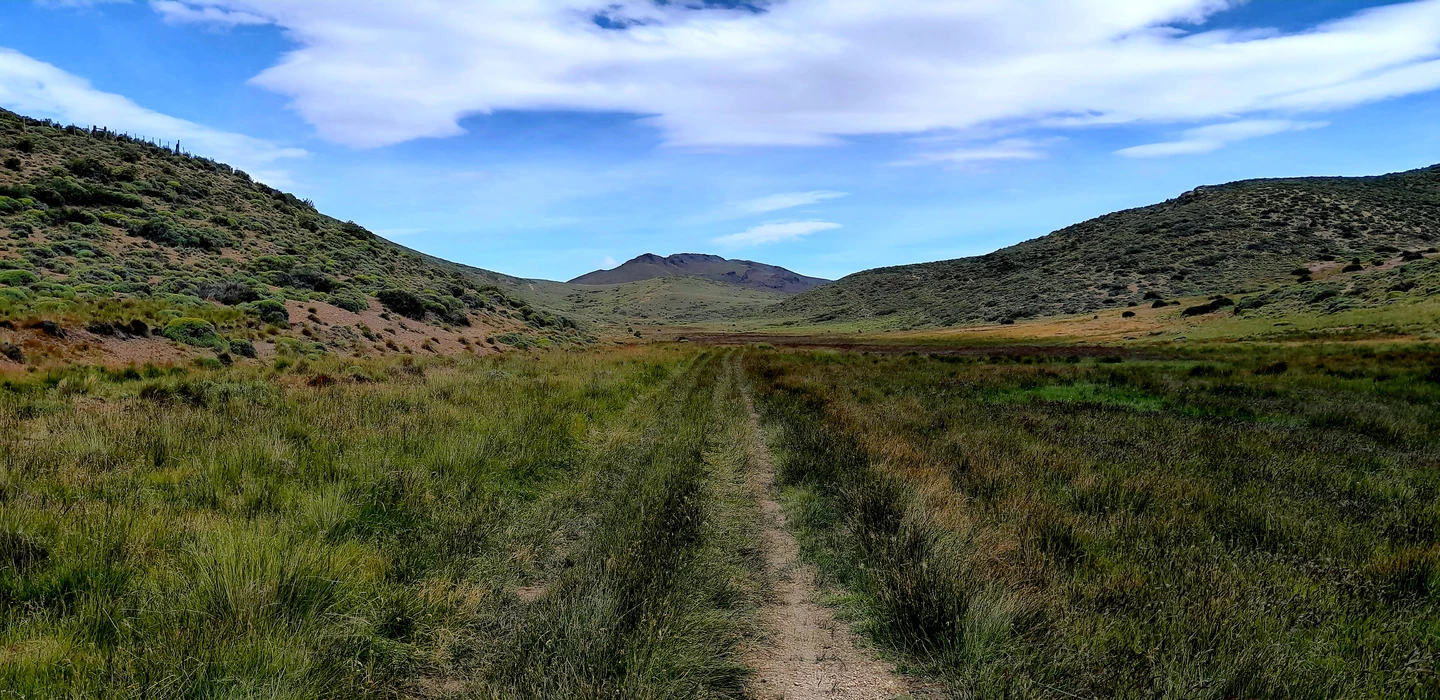
At times the wind was so strong that I had to lean against it with all my strength to even move forward. Completely exhausted, I finally reached the Arroyo El Montoso after 10 hours and pitched my tent behind a few bushes right next to the river. Well protected from the wind.

By far this is one of the most beautiful campsites on my trip so far. The silence (apart from the wind) far from civilization is exactly what I was longing for.

The next day, while packing up my tent, I was greeted with a beautiful sunrise.

In practically windless weather I went over the 1435 meters above sea level. located pass. From there I was able to drive almost everything downhill and arrived at the disused Fitalancao train station promptly at 9:00 a.m.
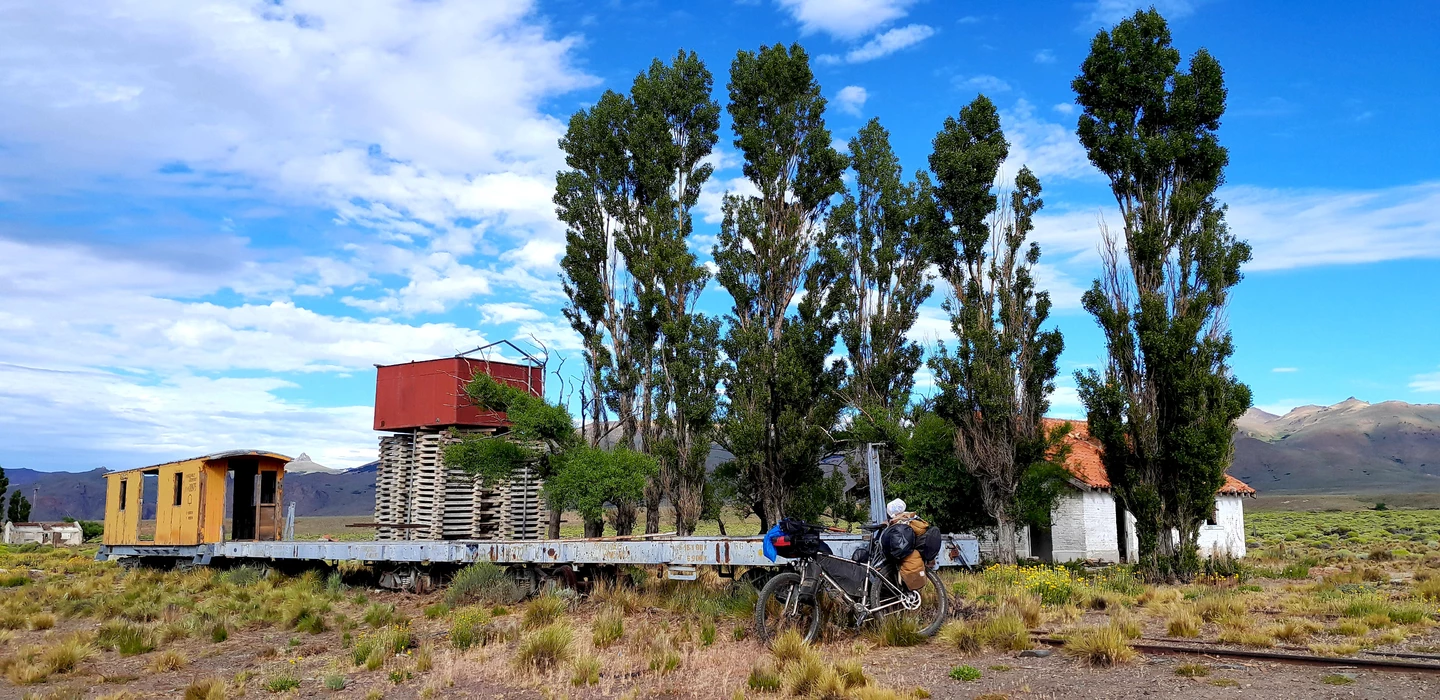
The long-abandoned Estación Fitalancao originally served Patagonia's extensive narrow-gauge railway "La Trochita". Until 1950 the route was only intended for freight traffic. The first passenger service started in 1950, connecting Esquel with Buenos Aires.
In 1992, as part of the central government's liberal economic practices, it was decided to close the line. However, today a short section (Esquel - El Maiten) remains as a tourist attraction.

After a short refreshment, I continued on. The wind picked up again and after a few kilometers I reached the Ruta Nacional 1S40. Corrugated iron track with fairly sandy ground. Around midday I reached civilization again for the first time in the town of Ñorquincó.
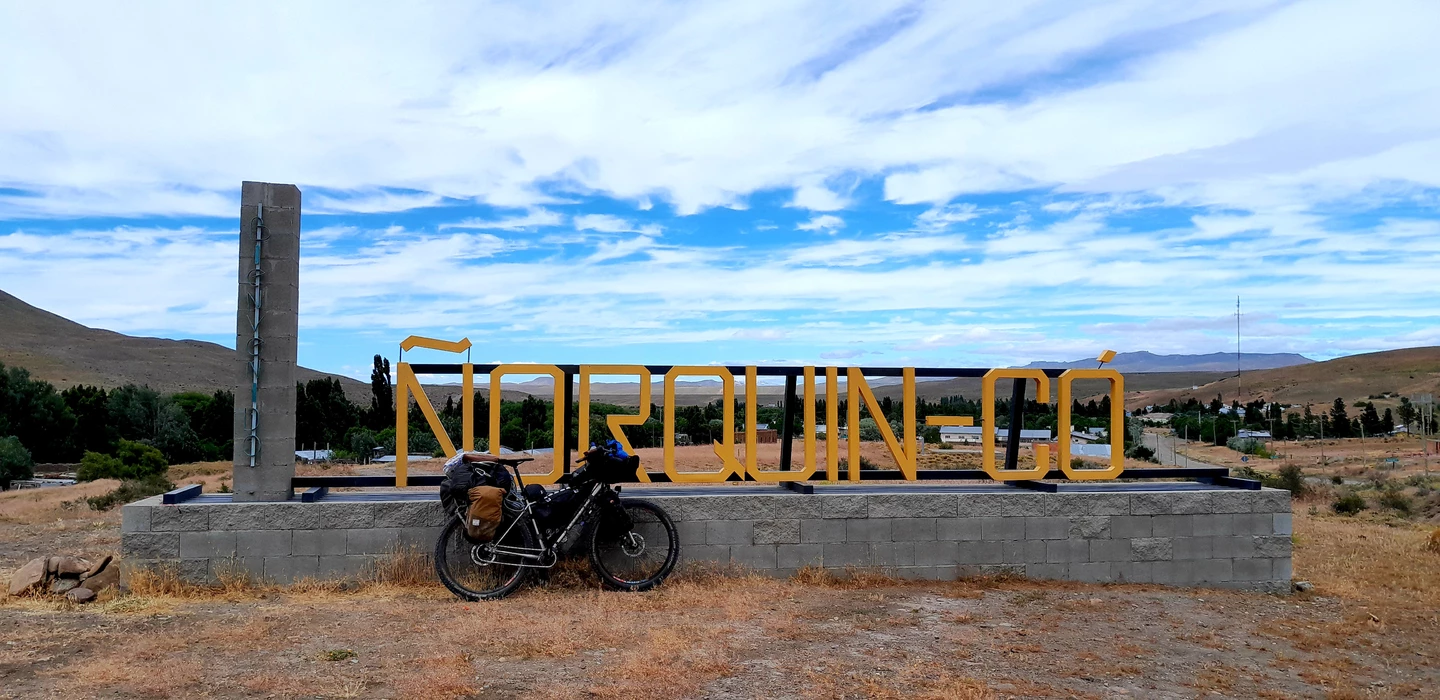
After looting the only shop there and taking a short lunch break behind the ATM sheltered from the wind, I continued cycling towards El Maiten.

A few kilometers from the town I found my campsite in a small forest. Cooking in strong winds takes significantly longer than usual. Tired and satisfied, I fell into the tent.

Early in the morning I cycled through El Maiten. The shops were all still closed and everything looked like a ghost town.
I continued on Ruta Provincal 6. At times I only made very slow progress because of the many corrugated iron roads and loose sand.

After crossing the Rio Ternero there was a section where a fairly large part of the forest burned down.

A little later I saw El Bolson and the surrounding mountains for the first time. You could already hear the traffic on Ruta 40 in the distance.

On the 10 kilometers to El Bolson I was once almost pushed to the side by a pickup that was driving way too fast and I had to jump off the road when two trucks were driving so close that they almost run me over.

I rented a small apartment in El Bolson for 4 days. Carlos and his wife have built a small house in their garden that they rent out.

The Beer Trail officially ends here in El Bolson. Now I'll try to test out the most important types of beer. There is enough choice.
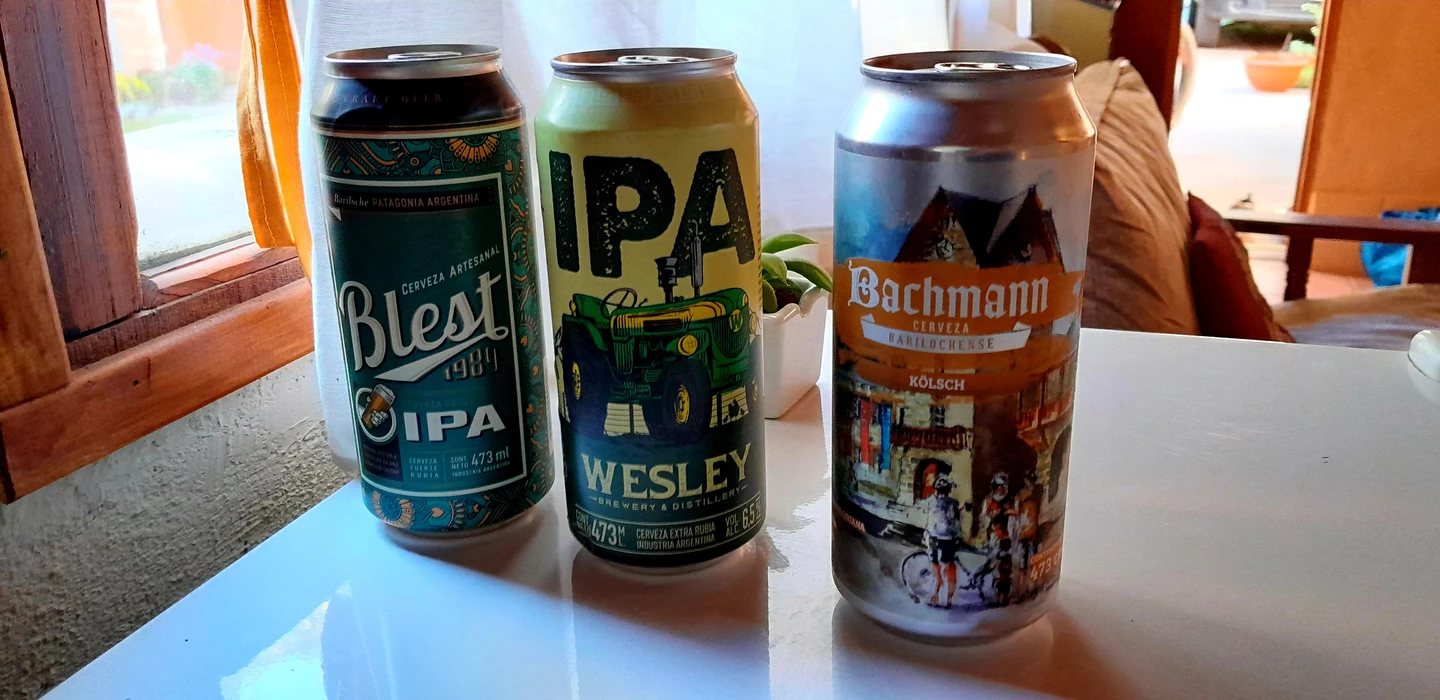
I met Gabriel by chance at the only bike shop in town. He comes from Brazil and has been cycling for 5 years.
He cycled up Ruta 40 from the south. Where the hub on his front wheel broke. His goal is to cycle all the way to Mexico.

In addition to the beer, there is also good food here. I especially like the empanadas. These are available with many different fillings.

Due to the current inflation, it is not that easy to withdraw cash. Western Union works best.
However, it is difficult to withdraw larger amounts (more than 100.- USD), especially in sparsely populated areas. That doesn't always make things easy.

Following a request from the CGT union, the DNU emergency decree was temporarily suspended by the newly elected President Milei through the National Chamber of Labor. The unions have now called for a general strike on January 24th.

I really enjoyed the days here in El Bolson. I will especially miss the many small cafés.
